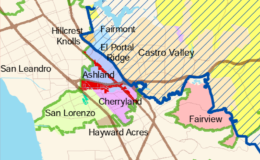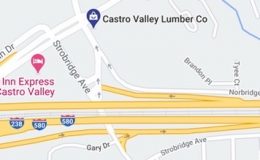Advocacy Groups and Castro Valley
- By : Rebecca Stanek-Rykoff
- Category : Governance, Local Control
Castro Valley faces a subtle uphill battle when competing for Alameda County resources. We’ve covered how Castro Valley sales tax doesn’t stay in Castro Valley, but what about other allocations? How do we make sure Castro Valley receives allocations from county and state measures?
There are a lot of advocacy groups and non-profit organizations in the Bay Area — here is a comprehensive list of non-profits in the Bay Area. Many of them are city-specific, but there are others whose catchment by definition includes Castro Valley — whether because it covers Alameda County, the East Bay, or the entire Bay Area. Many of these organizations exist to help residents access services and funding from their city. Others partner with cities to make sure the city receives money from county, state, and federal funding sources (such as ballot measures and grant programs). These organizations know how to advocate within the structure of a city, and are often successful and efficient at working with city governments.

However, they may not know how to work with unincorporated areas. I recently had an email exchange with a member of an East Bay non-profit advocacy group that really illustrated this gap. I have condensed the exchange to the parts related to governance:
“S”,
While I support Measure BB, I am concerned that the money for the unincorporated areas is focused on freeways, not bikes and pedestrians. (Based on this Measure BB fact sheet.)
I absolutely do not want to cut my nose off to spite my face. How do I work to make sure that Measure BB funds are available for pedestrian and bike infrastructure in the unincorporated areas?
Thanks,
Becky
Hi Rebecca,
Measure BB funds are spent equally based on population and road miles, as well as local priorities, so it is very important that Castro Valley residents voice their demands for better bicycling in their area. The money will be there for Castro Valley’s Bicycle and Pedestrian Master Plan, but given the history of the area, local residents might need to push the city to speed up the process, and to consider more progressive designs like protected/buffered bike-lanes and cycle-tracks.
Hope this helps, and please let me know if you have any questions!
“S”,
Not to be too pedantic, but the difficulty in Castro Valley (and other unincorporated communities) is that we can’t push “the city” to speed up the process. We have to go straight to the County. And we don’t have a Castro Valley Bicycle and Pedestrian Master Plan — rather, there is an Alameda County Bicycle and Pedestrian Master Plan for the Unincorporated Communities.
Anyway, local governance issues in the unincorporated areas aside, your response was very helpful.
-Becky
Hi Becky, thanks for telling me about your situation in Castro Valley, I didn’t realize it was that frustrating and difficult to get things changed. [Organization] definitely wants to help the unincorporated areas see better representation for bicycling, we’re taking steps towards that.
As we’ve seen in a previous post, unincorporated communities in California have a variety of governance structures. Few funding agencies or non-profit groups know how to work with those. Even if a given non-profit figures out Castro Valley, that won’t necessarily apply to San Lorenzo or Ashland or Sunol. Counties are not designed to deliver municipal services to residents, and likewise, non-profit groups don’t know how to advocate for residents of unincorporated areas.
The One Table coalition working with the EALI Environment and Agriculture Working Group is the rare example in recent history. The EALI process in general has the potential to forge more of these public-private partnerships, so we shall see what happens in the other working groups over the next few years. As for everything else, we have to reinvent the wheel every time to help advocacy groups help us.


